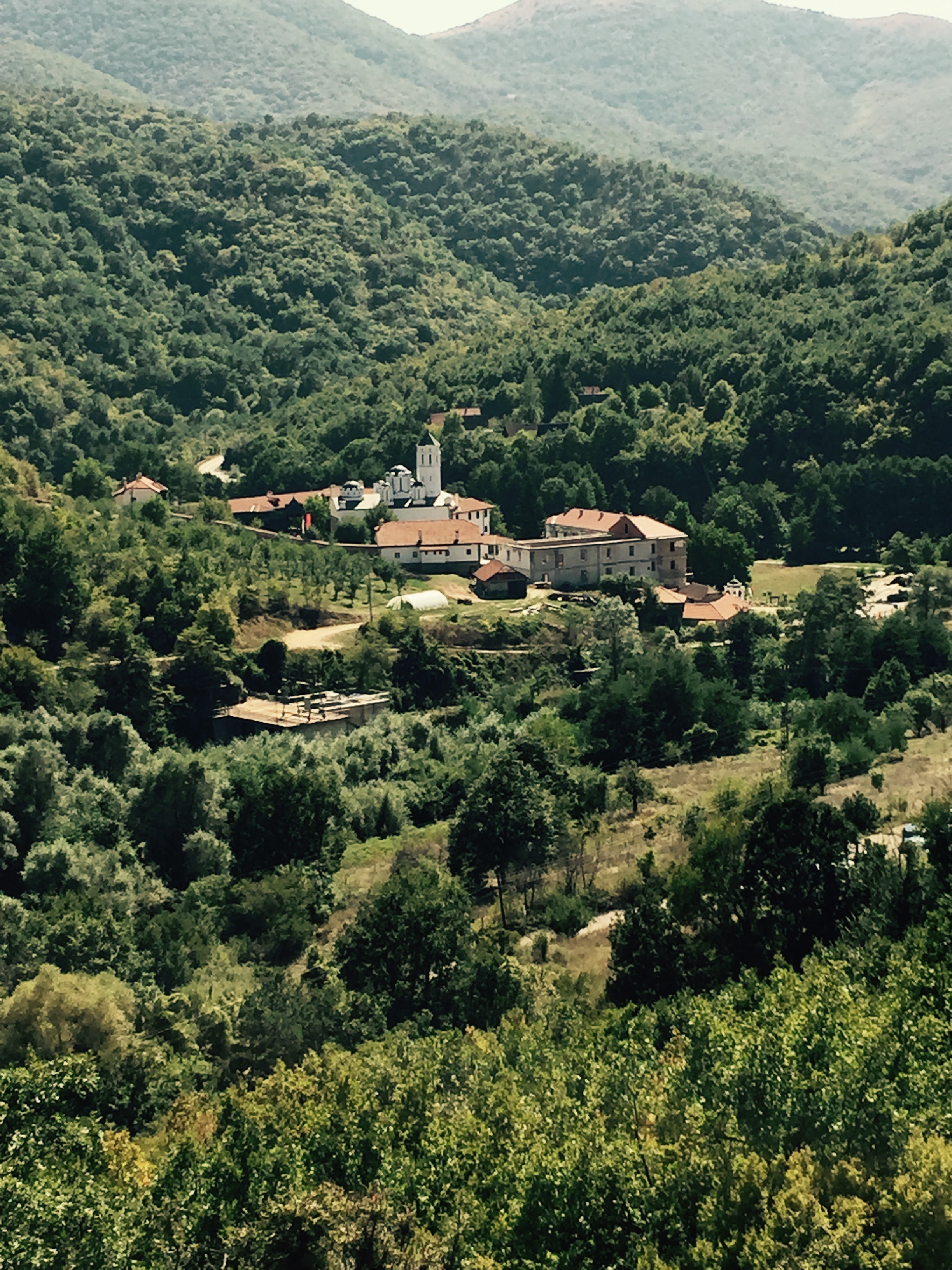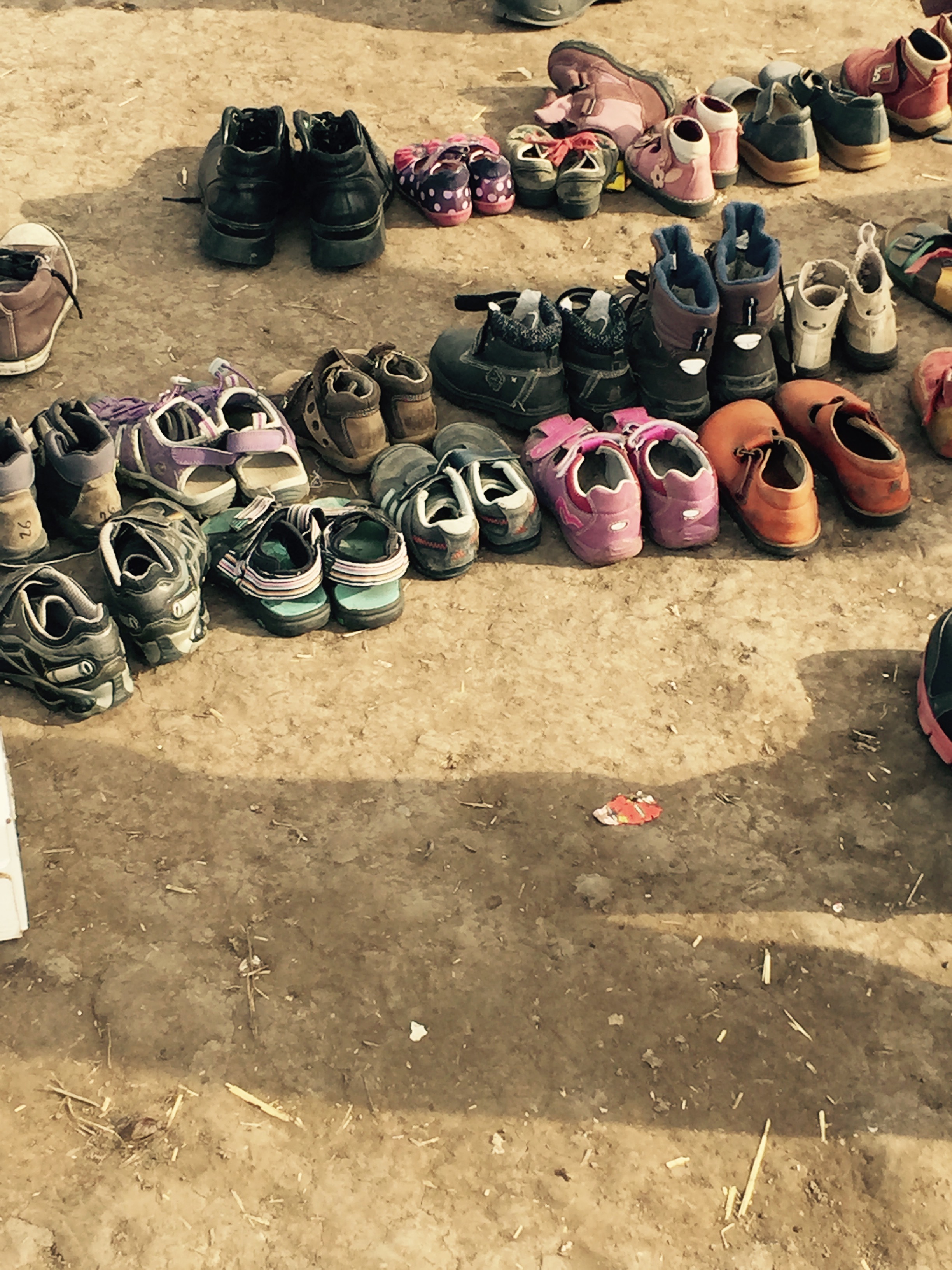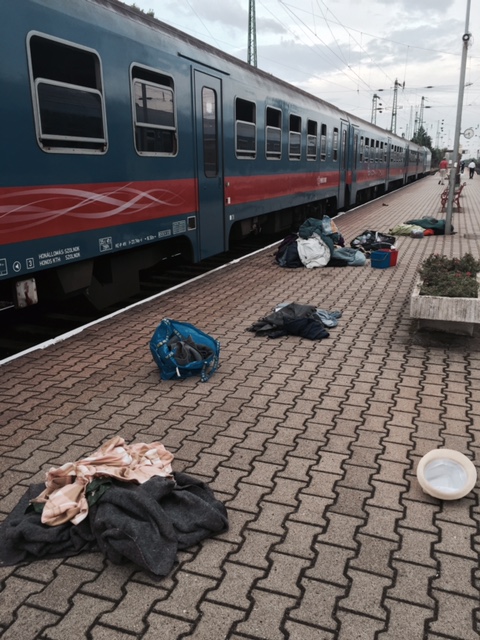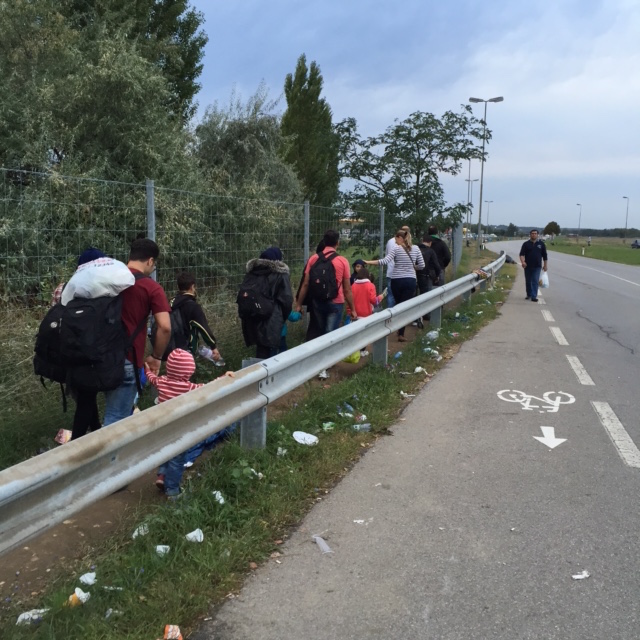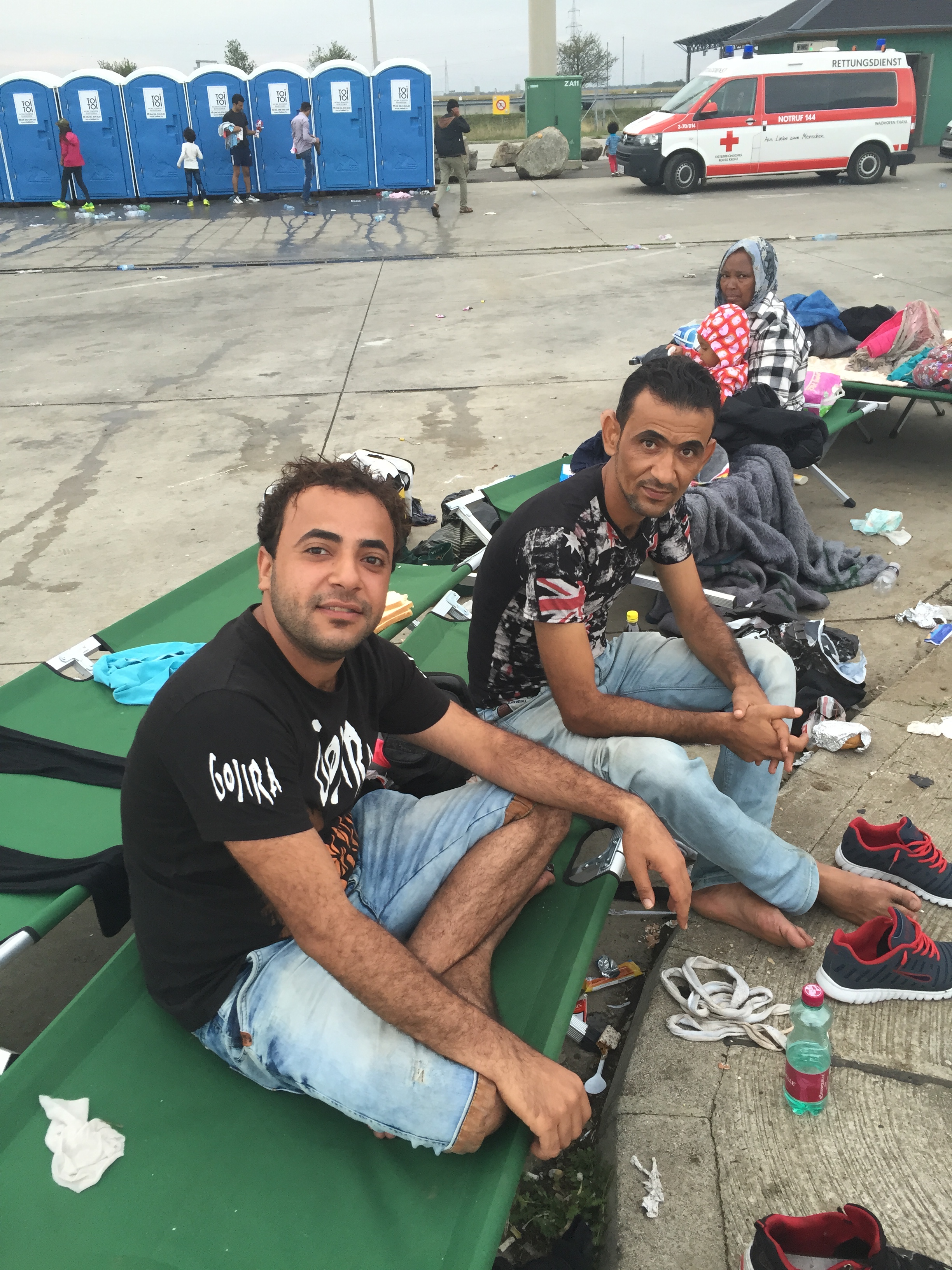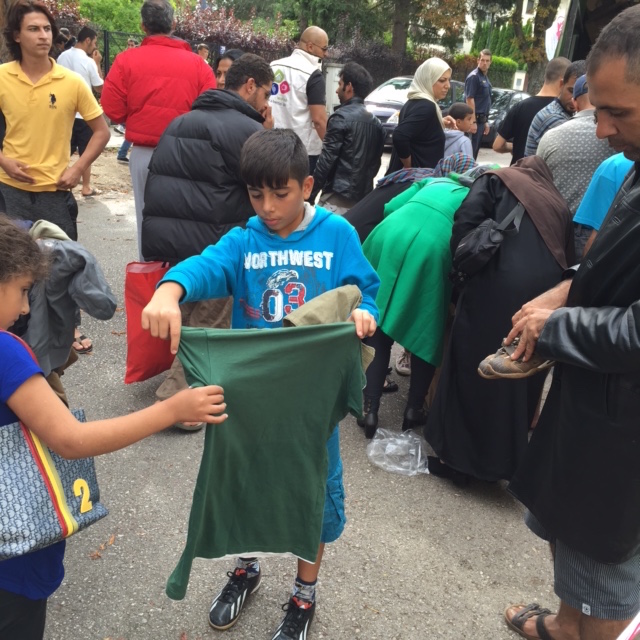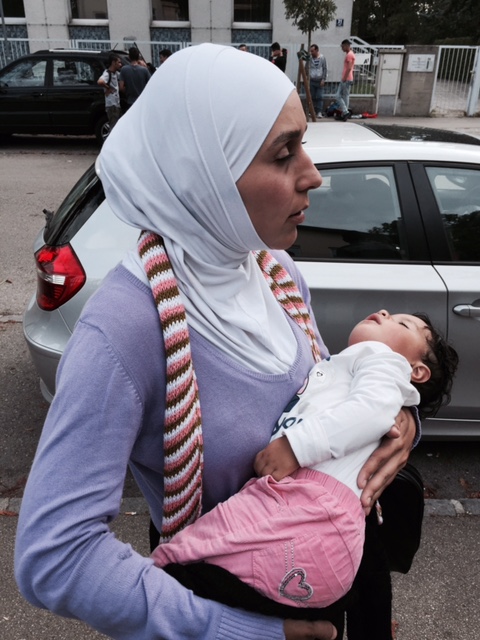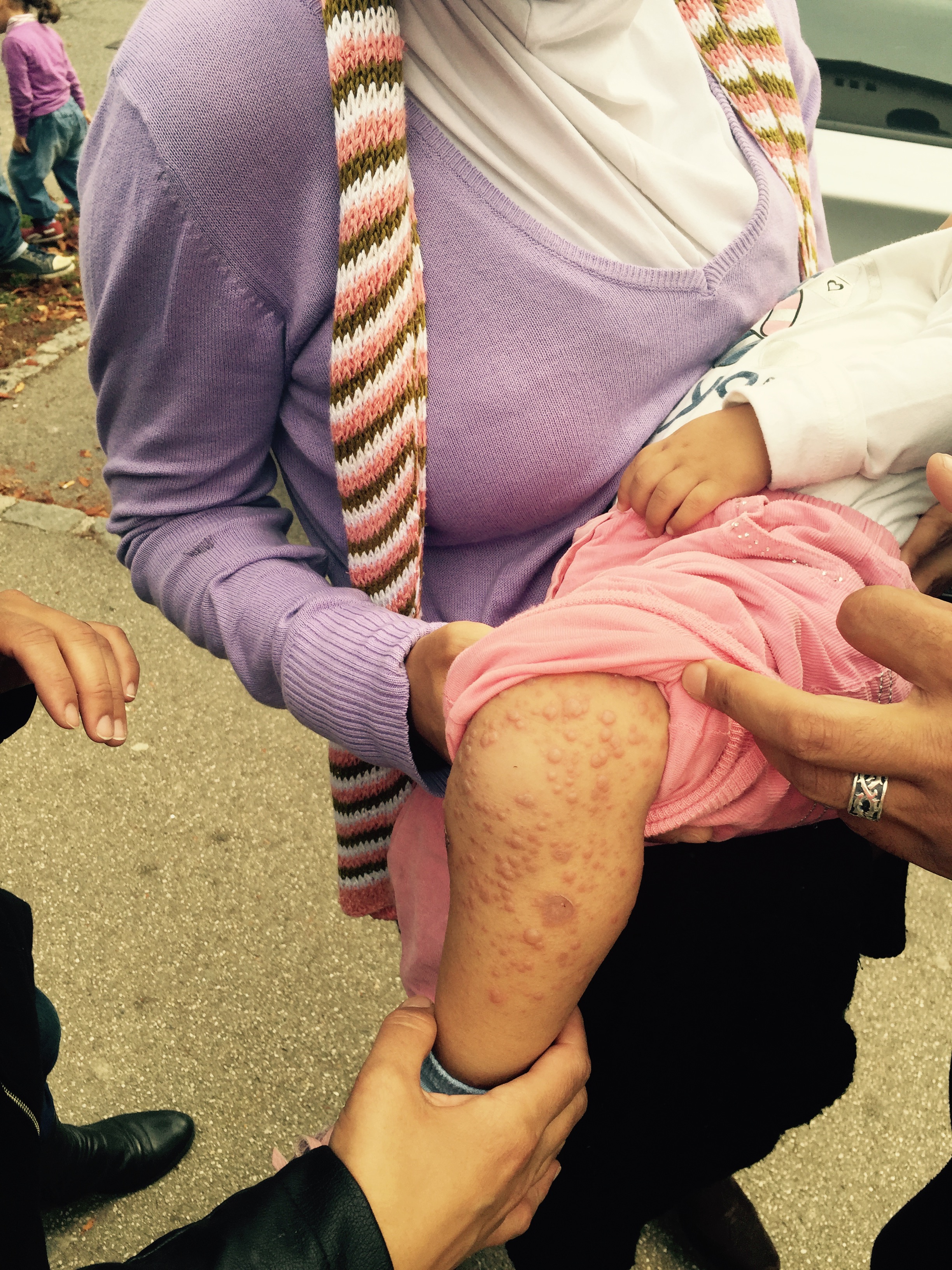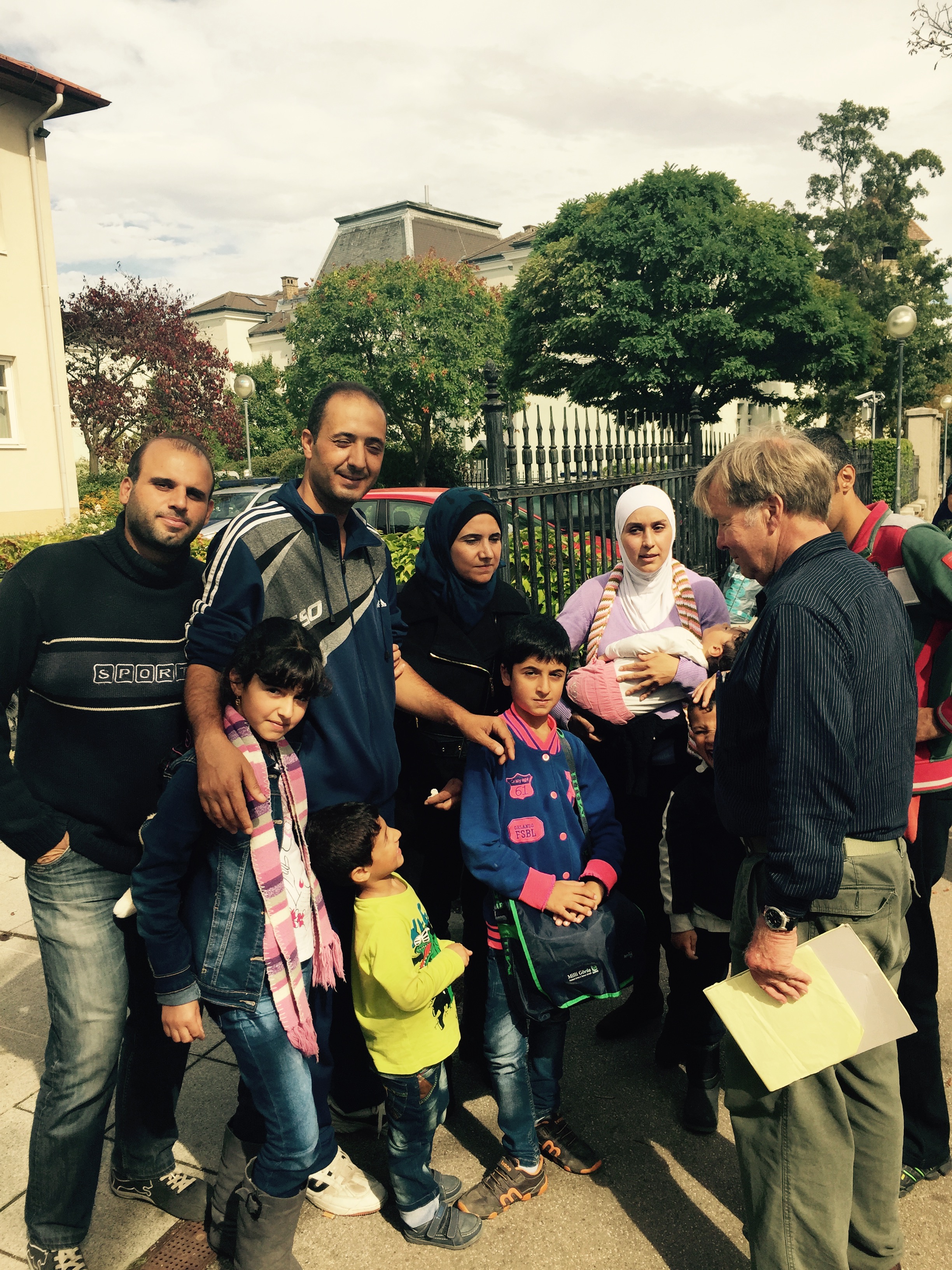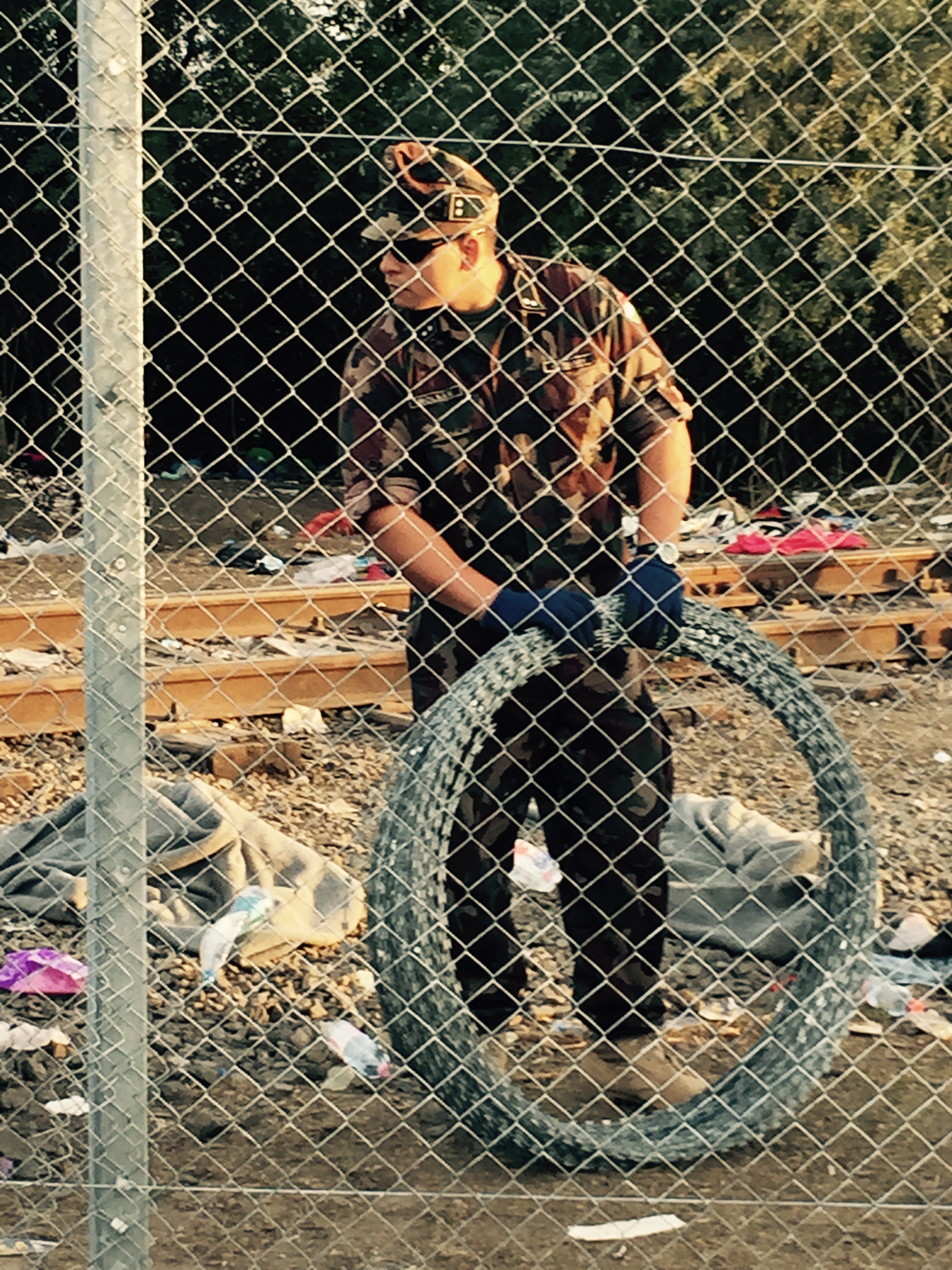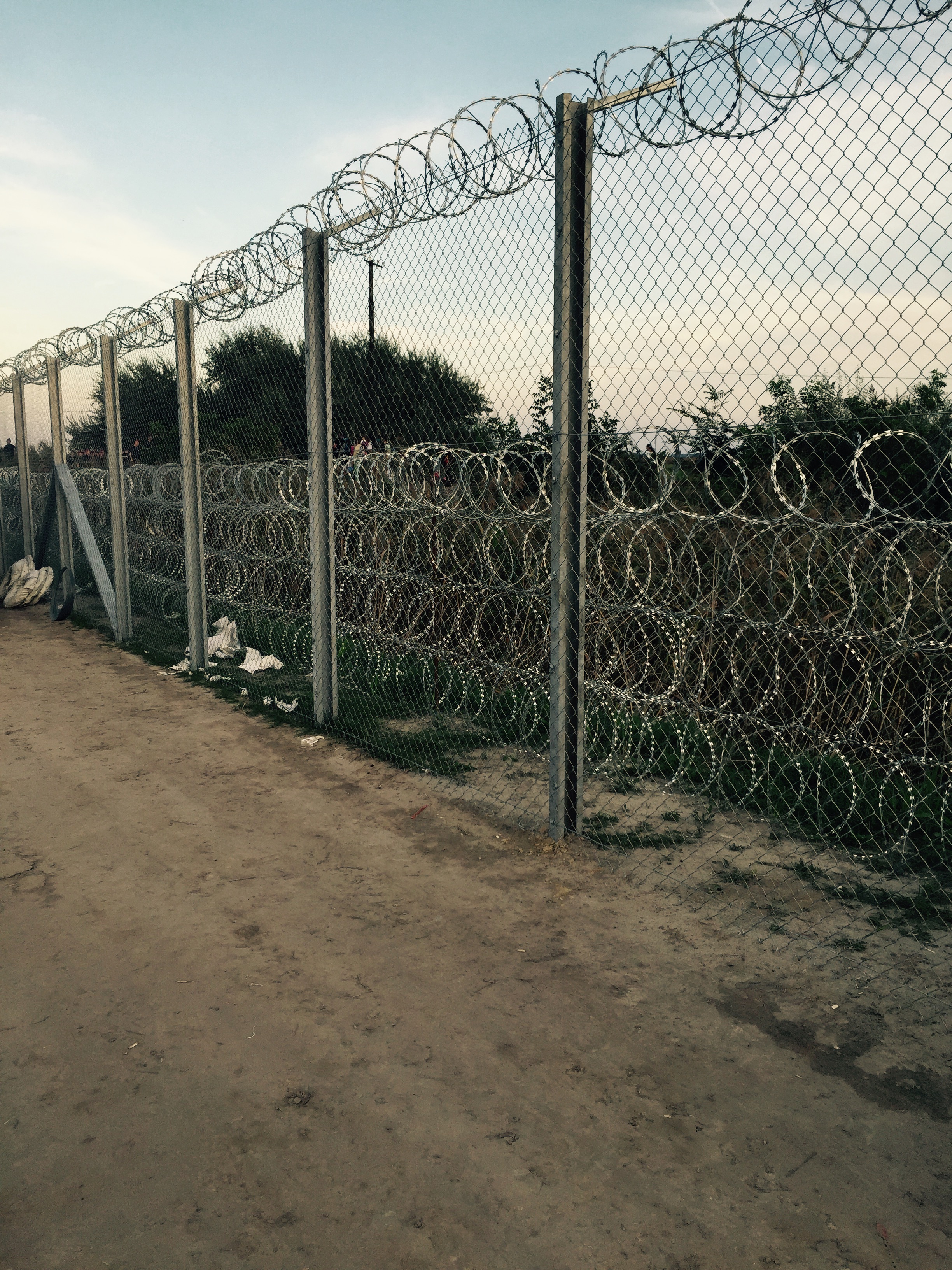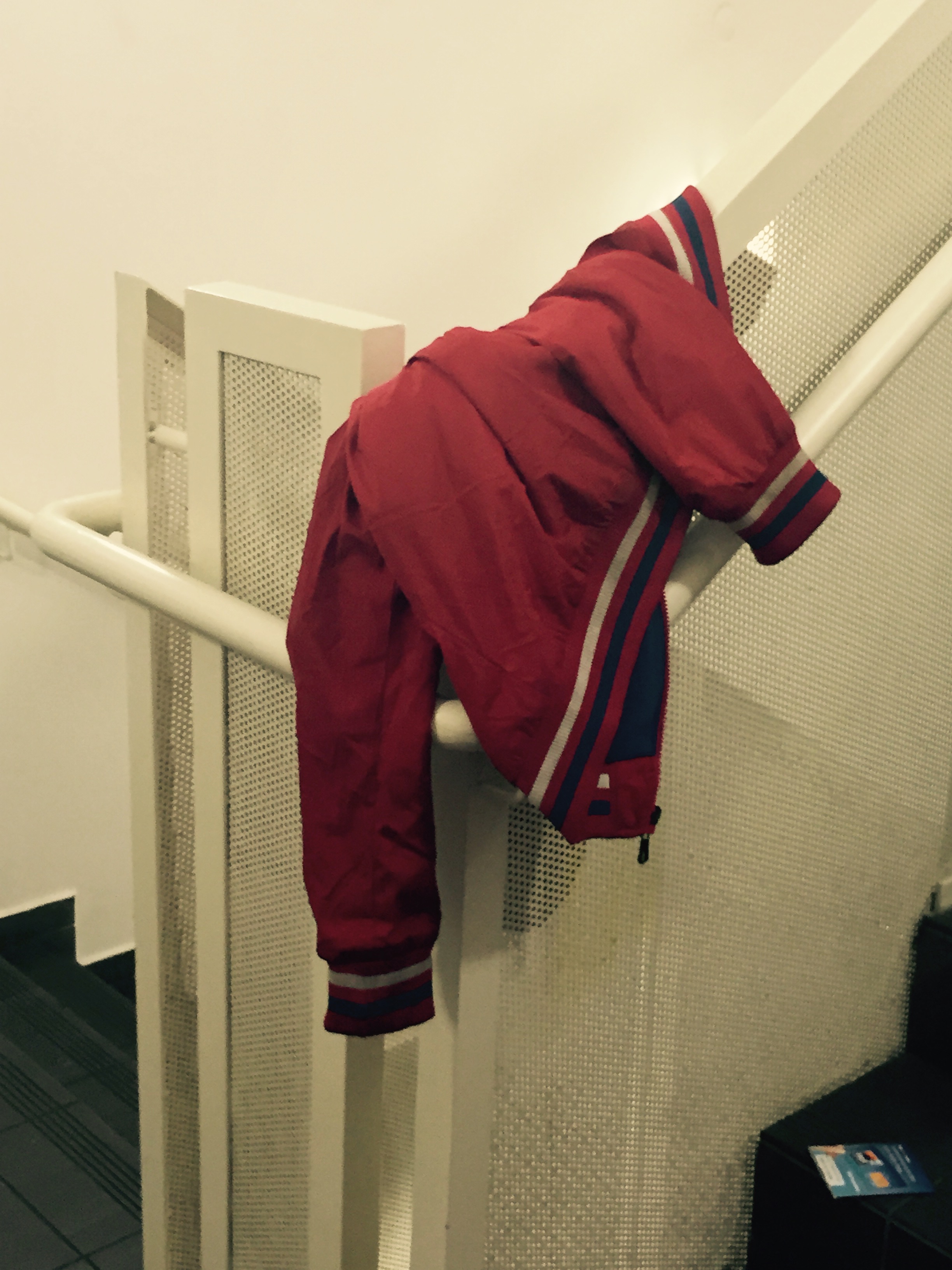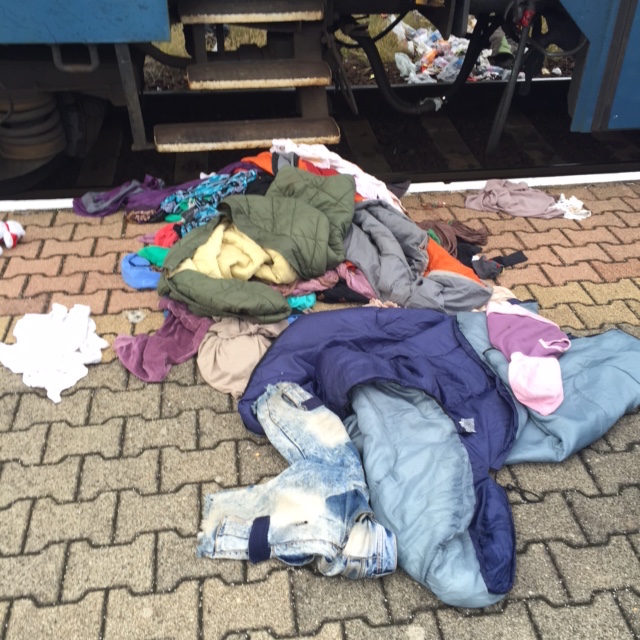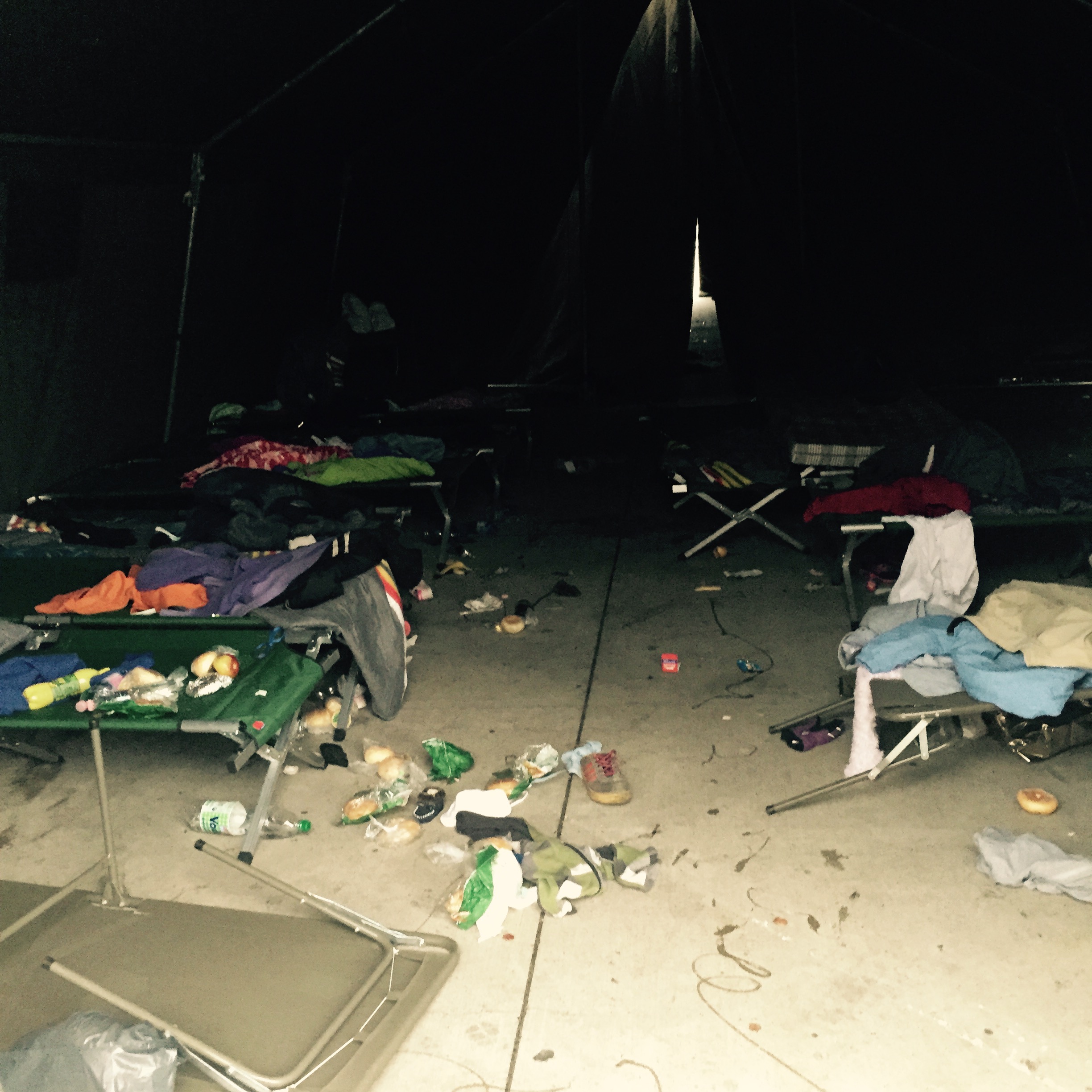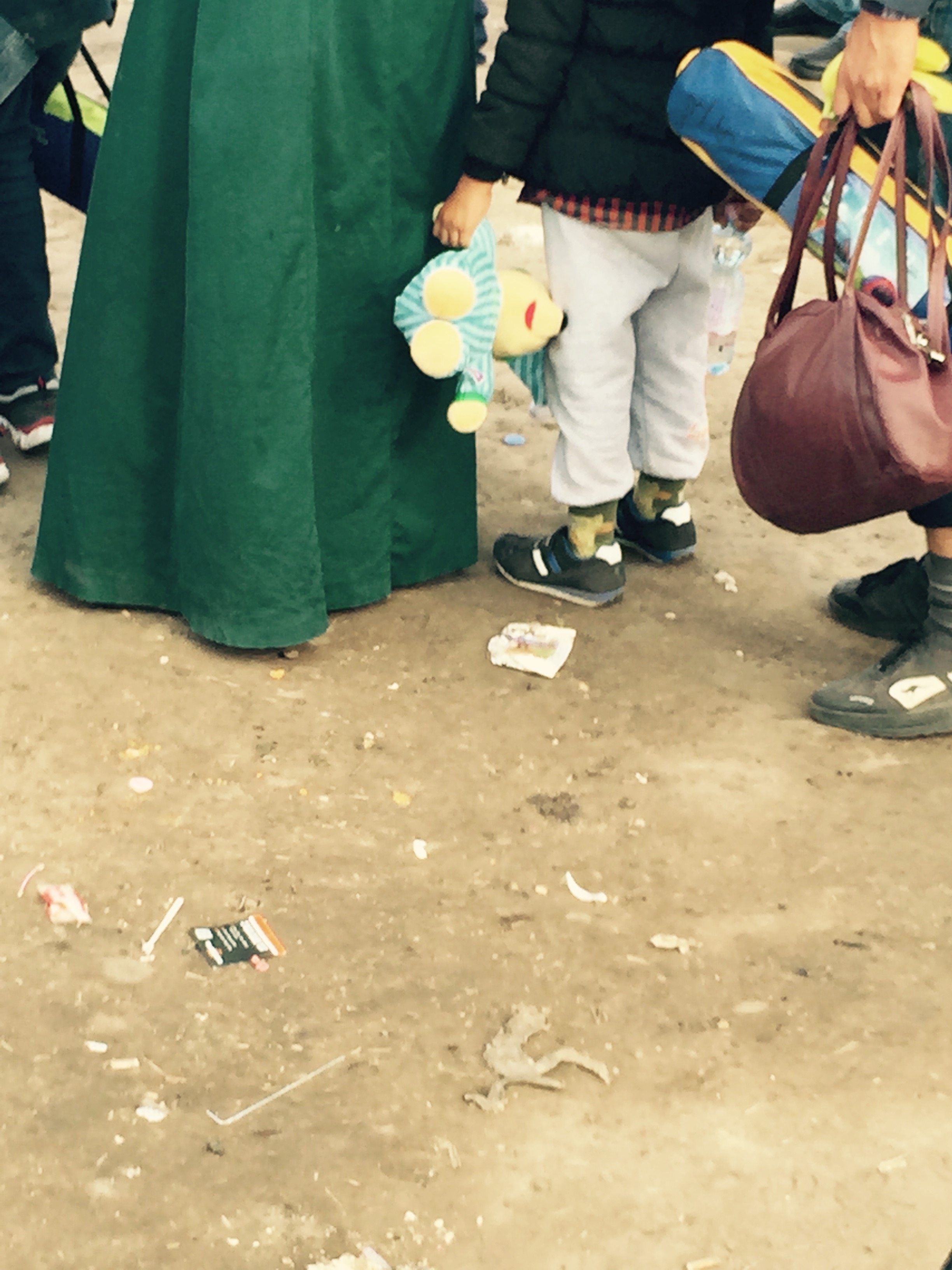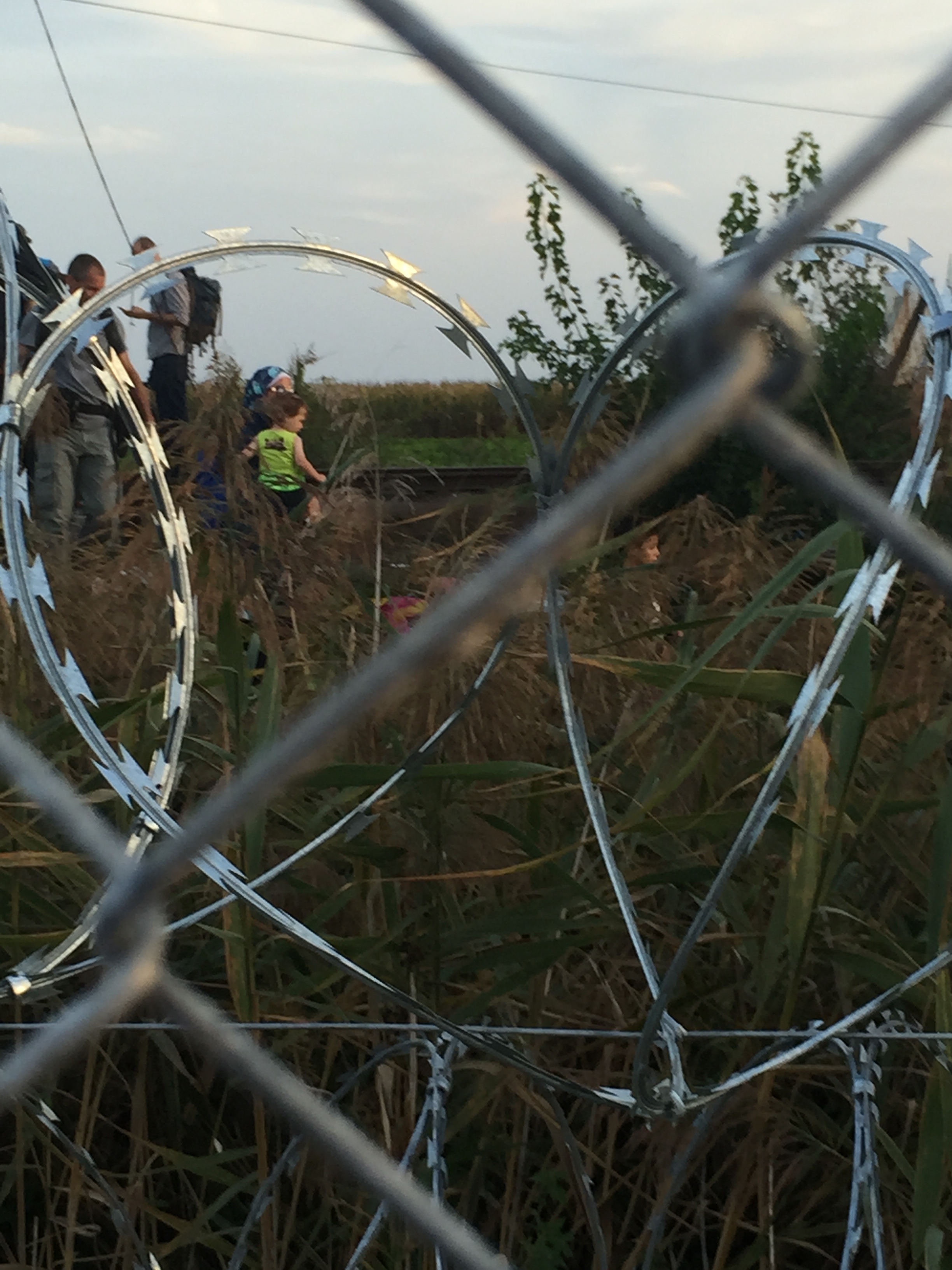Refugees: Eastern Europe, September 2015
September 11th The Lifeboat
In his famous 1968 essay, “The Tragedy of the Commons,” Garrett Hardin used the metaphor of a pasture in which all farmers are free to graze their cattle. “Each man,” he wrote, “is locked into a system that compels him to increase his herd without limit – in a world that is limited. Ruin is the destination toward which all men rush, each pursuing his own best interest in a society that believes in the freedom of the commons. Freedom in a commons brings ruin to all.”
Six years later he produced “Lifeboat Ethics,” which is unflinching in its misanthropy and yet has been much on my mind. Using the metaphor of a lifeboat, Hardin argues that it is suicidal for those in the boat to respond from the heart – because those still in the water will eventually overwhelm and sink the boat. “Complete justice. Complete catastrophe.”
 While Hardin would surely resonate with many of our presidential candidates, it is in Europe where his argument and his imagery seem most poignant – where images of boats crammed with desperate people and a small Syrian boy dead on a beach have moved many to tears but, with hundreds of thousands in or heading toward Europe, produced few ideas about what to do.
While Hardin would surely resonate with many of our presidential candidates, it is in Europe where his argument and his imagery seem most poignant – where images of boats crammed with desperate people and a small Syrian boy dead on a beach have moved many to tears but, with hundreds of thousands in or heading toward Europe, produced few ideas about what to do.
As Germany prepares for 800,000 refugees and Hungary builds a 110-mile fence, we watch, from afar, the unfolding of one of the most agonizing stories of our time. For someone who has recently been in a lifeboat, Hardin’s image will not go away.
September 14th They Will Go Somewhere
At the Belgrade airport we were told we could drive our Serbian rental car anywhere in eastern Europe – except Kosovo. But Kosovo, I noted, is not on the map. That’s because it is part of Serbia, said the Hertz man, as he sketched its approximate borders with his pen. Then how will we know when we get there, I asked? Oh, you’ll know, he said. They’ll stop you. They don’t like us very much.
For DeWitt Sage, a documentary filmmaker, and I, who have come here to try to comprehend the refugee situation threatening to overwhelm Europe, it was a jolting reminder that the Balkans, which is now the pathway for refugees fleeing by the hundreds of thousands from Syria, Afghanistan, Eritrea and elsewhere, was not long ago itself the scene of brutal ethnic warfare – of sieges, bombardments and genocidal executions that unleashed centuries of hatred in what seemed an endless war. In 1999 NATO air forces bombed Novi Sad, the city on the Danube where I write, so massively that it took four years to restore the river.
It is a reason for hope that peace, however fragile, has returned to the Balkans less than two decades later; and it is a reason for despair that this area is now the passageway to Europe for those fleeing atrocities so horrific they seem unprecedented in their scope and barbarity.
What it is not is a passing phenomenon. According to the UN Refugee Agency, 42,500 people are forced from their homes every day. They will go somewhere.
September 15th The Last Road to Hungary
We drove from Belgrade south to the Macedonian border without seeing a single refugee. We spent the night in a small hotel in Kopje – where unemployment is 27.3% and our night manager makes $3,400 a year – planning to find a small border crossing the next day and travel back toward Hungary.
We crossed without incident at a tiny outpost and wound past an 11th-century monastery and high into the Serbian hills. It was a beautiful, cloudless day, and with no signs of the turbulence of which we’d read, it felt like a trip back in time to an unchanging world of small farmers and rural villages. Until we got near the Hungarian border.
“Over there,” said DeWitt, pointing to lines of people walking along the railroad tracks a few hundred yards from the road. They carry their belongings in backpacks or plastic bags; some carry nothing at all.
They keep coming and coming, groups of men, mostly young, families with small children – some walking, others being carried – and grandparents. They are heading to the last opening along the border, a rail line that crosses into Hungary, a country racing to erect a high 109-mile razor-wire fence, at the small town of Roske. Half a mile north, a temporary city of tents had been erected on farmland, and dozens of buses line the one-lane road.
The police turn us away for lack of proper credentials. DeWitt tries to talk his way in by describing his earlier films of Eastern European refugees seeking to get to America. I fare no better by producing my metro card.
We find another way to the camp. Eleven thousand people arrived here yesterday, 3,500 more today. There are rumors, largely discounted, that the Hungarian government will close the border tonight.
We watch the police close one border exactly at 5 p.m. We try to drive to the railroad tracks on a dirt road along the border fence, but are stopped by an unamused policeman and soldier. 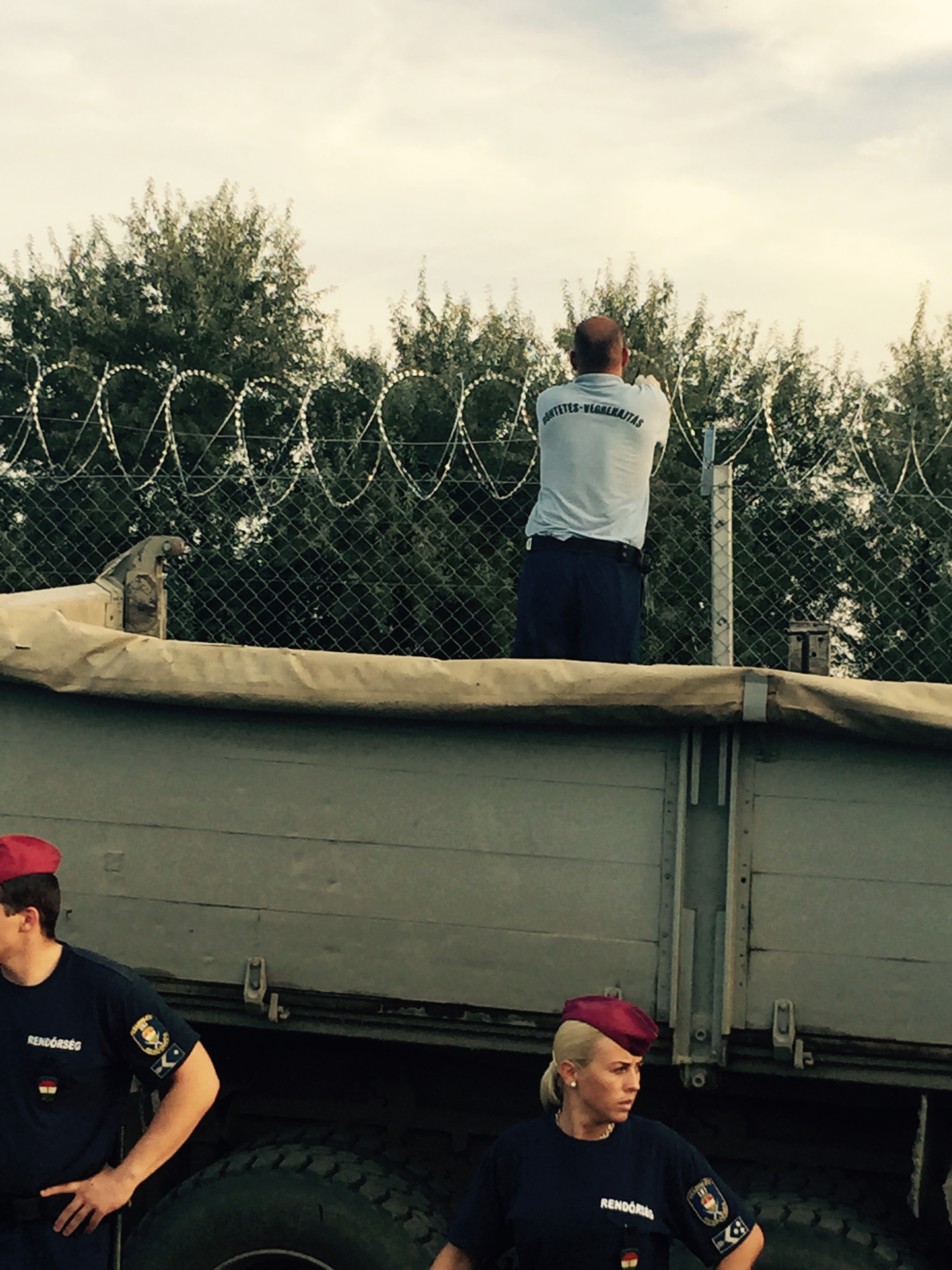 We manage to get to the tracks in time to see the military erect a high metal fence reinforced by razor wire and thereby close the last open entry into Hungary.
We manage to get to the tracks in time to see the military erect a high metal fence reinforced by razor wire and thereby close the last open entry into Hungary.
September 16th The Optimists
How do you make tens – perhaps hundreds – of thousands of people who are the source of apprehension across Europe disappear?
After watching Monday’s closing of the Serbian border, DeWitt and I set off yesterday to follow the refugees’ northwest passage across Hungary to Austria. We knew they had been put on buses and trains for the border, so we bypassed Budapest and headed for the university city of Gyor. A notable police presence was in and around its railroad station, but those who had inhabited it for days were gone, and the waiting room was empty. On a tip, we drove to the small border town of Hegyeshalom, whose station was also empty. But debris beside two empty trains bespoke the recent presence of many people.
The small road out of town, which led ultimately to Vienna, was lined with discarded clothes and plastic water bottles. We followed it until we came to a police roadblock. When we suggested we would like to take the scenic route to Vienna, we got an emphatic one-word reply: “Closed.” Now we knew for sure where the refugees were, but they have very big policemen in Hungary, so we took the highway to the border. As we crossed into Austria, we saw, on our right, the by-now-familiar city of brown tents and blue-uniformed police. We pulled into a rest stop, which was teeming with taxis,and walked over to the camp. I produced my Library of Congress card, and after some scratching of heads, I was allowed inside the police lines.
An Austrian couple (he originally from Turkey, she from Hungary) had come to the camp to offer refugee families free rides to Vienna. "It is" she said, "the least we can do."
Everyone in the camp was headed to Vienna, either by bus or, if they had money, by taxi.
Saif, a former Iraqi soldier had been traveling for 12 days. He was on his way to Norway, he said with unfailing optimism.
“I have to keep smiling."
Many of the photos by DeWitt Sage.
September 17th Camp Traiskirchen
In 1975, DeWitt Sage spent several months at Camp Traiskirchen, Austria, making To America, a documentary that followed the journeys of two families and one single man who had escaped from behind Eastern Europe’s Iron Curtain and would eventually emigrate to America. Filmed on the eve of the Bicentennial, To America sought to capture the experience of new immigrants and update a defining theme of American history – as least, for those who came by choice.
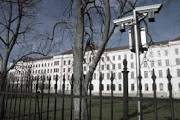
Yesterday we drove to Camp Traiskirchen, an enormous stone building whose grass park is surrounded by a high wall and filled now with tents. It is still a holding place for refugees, although its 900-person capacity has swelled at times to 4,500, and conditions of life inside were recently the subject of a scathing report by Amnesty International. Yet every day more refugees try to get into the camp, which yesterday was pronounced full and temporarily closed.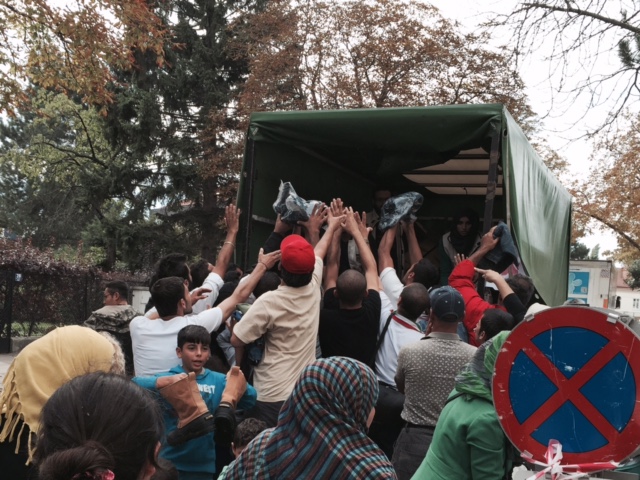
“Where will we go,” the outsiders asked? To Vienna, perhaps, or to local parks to sleep.
The streets around the camp are filled with a chaos that has spawned individual acts of great kindness, frustrated and at times ill-mannered responses, and bewilderment. Neither police nor overwhelmed camp officials seem to have any idea what is happening. Volunteers arrive continually in private cars to distribute water, food and clothes, which are at times discarded by disgruntled recipients. Angels of Mercy: Young people from across Europe and America have come to offer help, including Francesca Petersen, Julia Dragosits and Simone Korner, three young photography students from Die Graphische School,  who acted as interpreters with the police and managed to summon an ambulance for a mother desperate about her non-responsive son.
who acted as interpreters with the police and managed to summon an ambulance for a mother desperate about her non-responsive son.
September 18th Ali
Ali Jasam is a 6’4” veterinarian who sold his car, emptied his bank account and fled from Syria with his extended family.They are ten: Ali, his wife and four children; his brother, Yassir, his wife and child; and his brother-in-law, Mohammad Abbas, who was too poor to bring his family and hoped to find work in Germany and send for them next year. Yesterday he was turned back at the German border.
 They left home 50 days ago, Ali said, and for the last 15 days they walked – mostly in the woods and often in heavy rain – across Macedonia, Serbia and Hungary to the Austrian border. In the forest, Ali’s 16-month-old daughter got a nasty rash, which grows steadily worse. Yet, like other refugees we met, the Jasams, with astonishing resilience, seem never to despair.
They left home 50 days ago, Ali said, and for the last 15 days they walked – mostly in the woods and often in heavy rain – across Macedonia, Serbia and Hungary to the Austrian border. In the forest, Ali’s 16-month-old daughter got a nasty rash, which grows steadily worse. Yet, like other refugees we met, the Jasams, with astonishing resilience, seem never to despair.
Ali’s brother lives in Vienna, and he too hopes to settle in Austria. To stay, he must be fingerprinted, but he cannot get into Camp Traiskirchen because it is full. “Syria is our motherland," he says sadly, but he expects never to return to his ravaged country.
“We had to leave because Bashar al-Assad’s planes were bombing us. They came every day; and then they destroyed our house and killed my older brother.
“They tell us to say we are fleeing from ISIS,” he said. “But it was Assad’s militias who were bombing us.”
This evening I ran into Ali at the Vienna train station. He said he will return at 7:30 to be fingerprinted. He is happy.
September 21st Two Questions
The scenes we witnessed in Eastern Europe last week were overwhelming, and I’ll be sorting through my impressions for a long time. The dominant images for me were of people walking – determinedly, silently, resiliently – along paths and railroad tracks. They just kept coming, and we knew that behind them, beyond our sight, were thousands more. We didn’t see the violence, either by refugees or the police that is making headlines, but we did see the construction of a razor-wire fence by soldiers as silent and determined as the refugees.
Even on our very limited canvas, DeWitt and I saw acts of kindness and of rudeness. We watched volunteers distribute food, water, sleeping bags and clothes; and we saw refugees toss away whatever did not suit. We saw food left uneaten and garbage strewn seemingly across Europe. We encountered drunken and belligerent young Afghanis, but many more families who had endured weeks of misery without losing either humor or hope.
Away from the worn paths and border crossings, life seemed to go on untouched, but of course it cannot, as this movement has changed this place in ways we can’t yet understand. Eastern Europe, which is still emerging from its own decades of violence and repression, has little tradition of diversity and seems overwhelmed by the chaos.
The line between refugee and emigrant may be legally simple to draw, but not here on the ground, where the preponderance of those walking have come from Syria, a collapsed state, both ungovernable and unlivable.
I came with two questions:
1. Why should people who were born in a country defined arbitrarily by lines someone drew long ago on a map be forced to stay in that place even at the cost of their lives?
2. Why should people who are barely eking out a living in their homelands be required to take in others who might undermine their fragile livelihood?
I leave without answers – except this, that no fence is high enough, no razor wire sharp enough to stop those determined to seek a better life.
September 25th Friday's Quiz
Question: What's the difference between a refugee and an immigrant?
Answer: An immigrant chooses to settle in a new country, usually for economic reasons, to make a better life for him or herself and family. The U.S. currently has about 11 million “undocumented” immigrants living and working here. A refugee is fleeing persecution, based on political views or ethnic affiliation. Individuals must document that their lives are endangered in the countries from which they fled. The U.S. limits refugees to 70,000 annually, with the largest numbers currently from Burma, Bhutan and Iraq.
Question: Can you name the ten countries currently sheltering the most refugees? Can you name even one? (I couldn't.)
Answer: According to a report by 24/7 Wall Street, using data gathered by the United Nations Refugee Agency, they are:
- 10. China: primarily Vietnamese who fled there in the 1980s.
- 9. Uganda: Those fleeing South Sudan’s civil war and the vicious militias in Democratic Republic of Congo.
- 8. Chad: Most from Christian-Muslim fighting in Central African Republic.
- 7. Kenya: Primarily from South Sudan and Somalia.
- 6. Jordan: Mostly from Syria.
- 5. Ethiopia: Mostly from South Sudan.
- 4. Iran: Primarily from Afghanistan.
- 3. Lebanon: Mostly Syrian. Lebanon's 232 refugees per 1,000 citizens is the highest ratio in world.
- 2. Pakistan: Mostly Afghanis.
- 1. Turkey: 1.2 million, mostly Syrians.
These 10 countries shelter well over half the world’s refugees, with Turkey, Pakistan and Lebanon home to 30% of the total. Europeans worry about the impact of refugees on their cultures and infrastructures. Imagine the pressures on Chad, Uganda and Lebanon.
October 7th It's All Connected
Israel took the Golan Heights from Syria in the 1967 Six-Day War and annexed it 14 years later, an action the United Nations has never recognized. Militarily, the Heights are the strategic high ground: Syria used them to shell northern Israel, and from them Israeli forces can now monitor troop movements all the way to Damascus. But the Golan Heights have a more important attribute: All those streams flowing into the Jordan River supply a third of Israel’s fresh water, an increasingly scarce commodity in that part of the world.
Research published earlier this year linked the “extreme drought” in Syria (which it in turn linked to manmade warming trends) to the violence that has killed 220,000 people, displaced six million and led to the haunting images of refugees walking across Europe.
It’s in many ways a familiar story: As Thomas Friedman reported two years ago, the Assad government encouraged its cronies to consolidate land into large farms, abetted by wasteful water policies. The result was to drive small farmers off the land and into cities, where they became an unskilled and largely unemployed labor force. The drought finished the job, and the government provided no relief to millions of displaced people. When they rebelled, it sought to crush them.
Drought is not the only – and perhaps not even the primary – cause of Syria’s violence, but water is as important a part of the equation in the Middle East as oil. And it provides another confirmation of the vital connection among environmental degradation, social injustice and political unrest.
October 19th I Lift My Lamp
As Hungary closes a second border, this one with Croatia, and even Germany begins to seem overwhelmed by the thousands of refugees still walking across Europe, I am reading Balkan Ghosts, Robert Kaplan’s reflections on his travels through this burned-over region of Europe. It’s a story of peoples who for centuries have nursed hatreds based on every conceivable way of dividing human beings – religion, ethnicity, nationality, class, ideology, “race.”
In Kaplan’s dark tale, the few constants over the last century – other than murderous tribalism – have been dismal poverty, the Christian-Muslim divide, and pogroms to annihilate the Jews. At times communist, fascist or nationalist strongmen imposed an oppressive and suffocating peace. But the horrors of such dictatorships – particularly the 45 years of Soviet domination – intensified the misery of the people, while suppressing, rather then eradicating, their longstanding hatreds – which simmered below the surface, waiting for release into an orgy of torture, bloodshed and genocide.
It’s a region evocative of the places from which the refugees are fleeing, where arbitrarily imposed borders and totalitarian regimes have likewise failed to abolish either ancient ties or age-old hatreds. The Balkans, in short, seem economically, culturally and philosophically incapable of coping with the greatest relocation of people since World War II.
There is, however, a model for absorbing large numbers of strangers, and while America is not going to solve the crisis, it remains the beacon for many fleeing the horrors of the Middle East. Despite the rumors of its demise, America is still “a city upon a hill,” which, at least until recently, proudly called itself a nation of immigrants.
I hope we can keep the faith.
November 16th Out of the Darkness
I happened, the day after the Paris attacks, to pick up an old copy of The New Yorker and find James Wood’s remarkable review of the works of Primo Levi. “Evil is not the absence of the good, as theology and philosophy sometimes maintained," Wood writes of Levi’s Auschwitz memoir, If This is a Man. "It is the invention of the bad." Levi spent World War II’s last 11 months at Auschwitz,  but he refused to become #17451, the identity tattooed on him, because he insisted that “these things happened, a victim witnessed them, and they must never be erased or forgotten.”
but he refused to become #17451, the identity tattooed on him, because he insisted that “these things happened, a victim witnessed them, and they must never be erased or forgotten.”
The resolve to remember, no matter how horrific the memory; the assertion of one small human voice in response to unspeakable evil; the affirmation of the significance of each one of us – this, for me, is the legacy of the holocaust. And it is this that ISIS is intent on obliterating. Look at its short and ghastly history filled with: the destruction of antiquities and cultural icons; the extermination of the Yazidis and other peoples; the enslavement and rape of women; the mass executions in Tikrit, the bombings in Beirut, the killing spree in Paris. Each of these acts is intentionally indiscriminate, aimed not just at physical murder but at eradicating memory, destroying cultural identity, denying our common humanity.
We must not become complicit, either in demands for indiscriminate retaliation in which innocents are killed or in retreating from the world. “The business of living,” wrote Levi, “is the best defense against death, even in the camps.”
